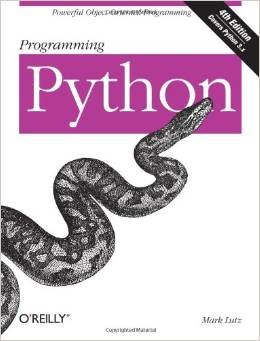If you’ve already mastered Python’s basics, it’s time to move on to the real thing! Mark Pilgrim’s Programming Python (pdf) – 4th edition, updated for version 3.x in this 4th edition, provides comprehensive tutorials and code examples on the language’s primary application domains. It’s been updated to reflect the current best practices in Python and the changes introduced by the latest version of the language.
Mark Lutz, the author of this book, is well renowned as one of the pioneering figure in Python field. A software developer for 25 years, Mark has been involved in the Python community since 1992. He started writing Python books since 1995 and is considered the author of the language’s earliest and best-selling books. Besides Programming Python, Mark has also authored two other O’Reilly books: Learning Python and Python Pocket Reference.
The pdf version of Python Programming – 4th Edition is available here for free download. You can also buy the book from Amazon following the referral link.
Buy from Amazon: Programming Python
Book Review:
- Title: Programming Python
- Author: Mark Lutz
- Edition: 4th
- Publisher: O’Reilly Media
- Pages: 1628
- Format: pdf
- Size: 27.4MB
Programming Python is written in a clear and concise manner to give you a better understanding of the language’s many roles in practical, real-world programming. It is completely updated for version 3.x, so programmers who are not yet ready to dive into Python 3.x may stick with the 3rd edition of the book.
The book explores how the commonly used tools and libraries in Python are used in databases, text processing, networking, front-end scripting layers, and more. You’ll find a lots of example codes that illustrate common idioms and correct uses; this book overall delves into Python as a software development tool.
The book is divided into 6 parts and 21 chapters. These 6 parts cover topics: Part I. The Beginning, Part II. System Programming, Part III. GUI Programming, Part IV. Internet Programming, Part V. Tools and Techniques and Part VI. The End.
The first part is the shortest one in the book and is a Quick Python Tour – building a simple demo that includes data representation, object persistence, GUIs, object-oriented programming, website fundamentals, and many more.
The System Programming part of the book covers system interface tools and techniques for command-line scripting, script execution, files and directory tools, running programs in parallel, and processing files and folders.
GUI Programming part explores Python’s tkinter widget library and explains how to use it. It additionally includes GUI coding techniques along with complete GUI programs.
Network scripting, server-side scripting, client-side scripting, website implementation techniques, CGI scripts, and client-side protocols and emails tools are included in the Internet Programming part.
The Tools and Techniques part explores topics such as databases and persistence, implement data structures, interface with databases, text and language, and Python/C integration.
Buy from Amazon: Programming Python
Although the emphasis is on Python 3, Programming Python with its over 1,600 information-packed pages leaves no Python library unturned. It’s really a “way-to-go” book for those who are interested in building a solid foundation on the language and for those seasoned Pythonistas who are ready to jump into Python 3.
Find more Python books/pdf here.
